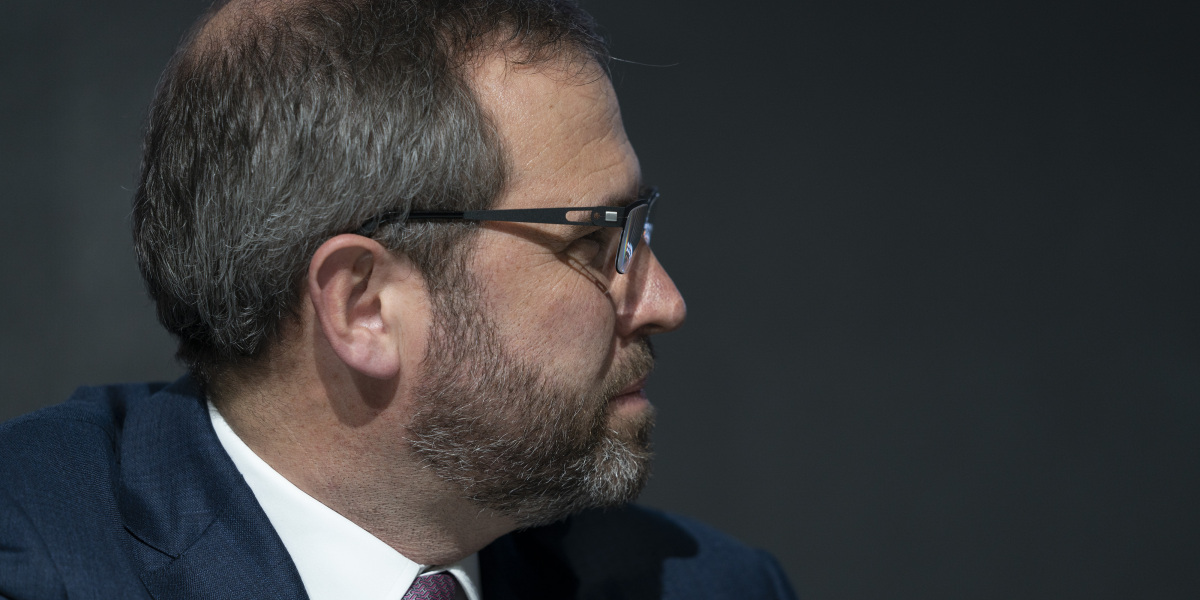Ripple, one of the most important companies in the cryptocurrency industry, said Monday evening that the Securities and Exchange Commission is poised to file a bombshell lawsuit against the company over the alleged sale of unlicensed securities.
The lawsuit will also name Ripple CEO Brad Garlinghouse and cofounder Chris Larsen as defendants, according to Garlinghouse, who told Fortune the agency will file the case in the near future.
Judith Burns, a spokesperson for the SEC, declined Fortune’s request for comment about the lawsuit or to confirm that there would be one.
If the agency does sue Ripple, the action will follow years of debate between the company and the agency about whether XRP, a digital currency associated with Ripple, is a security, like a share of stock—which must be registered with the agency—or is instead a currency and thus beyond the SEC’s purview. XRP is the third most valuable cryptocurrency, and currently has a market cap of $23 billion.
Ripple’s decision to announce that it’s about to be sued is an unusual one. Garlinghouse has predicted the incoming Biden administration may be friendlier to the cryptocurrency industry than the Trump administration has been, suggesting that Ripple’s preemptive announcement may have a political component.
Garlinghouse also blasted the SEC’s decision to sue right before the holidays, and said Ripple will fight the case. “It’s not just Grinch-worthy, it’s shocking,” said Garlinghouse. “It’s an attack on the entire crypto industry and American innovation.”
A security, or not?
In recent years, the SEC has ruled that the two most valuable cryptocurrencies—Bitcoin and Ethereum—are not securities, partly on the grounds they are decentralized with no person or company in control of them.
XRP is different from Bitcoin and Ethereum in that the latter two currencies are minted in a gradual, ongoing process called mining. By contrast, Larsen and others created 100 billion units of XRP in one fell swoop in 2012 for a company called Ripple Labs. While Ripple continues to own the lion’s share of XRP, the bulk of its treasury is held in reserve, to be sold in scheduled allotments. Garlinghouse and Larsen also each own a significant amount of XRP. This arrangement has led some observers to view XRP as more akin to a company’s stock than a currency.
Ripple has pushed back aggressively for years on the notion that XRP is a security. The company notes it does not have discretion to tap the reserve funds as it wishes, and that XRP has become increasingly decentralized as banks and other merchants use it as a bridge currency in cross-border transactions. According to Garlinghouse, the SEC regarding XRP as a security controlled by Ripple is akin to viewing oil as a security controlled by Exxon.
Now, the issue could be resolved by a federal judge, in a case that would have implications for the booming cryptocurrency industry. The SEC recently won a case involving the messaging app Kik, which issued cryptocurrency tokens to its customers. A judge in that case declared the tokens in question were unlicensed securities.
The facts of the Kik case, however, are different from those involving Ripple: Kik sold its tokens directly to would-be investors at the height of the crypto bubble of 2017, in seeming defiance of an SEC directive earlier that year. In contrast, Ripple began pursuing business ideas around XRP nearly eight years ago, at a time when the agency had offered no guidance on digital tokens.
The upshot is that the outcome of a theoretical Ripple case is far from certain.
In remarks to Fortune, the Ripple CEO blasted the agency and its chairman, Jay Clayton, for deciding to sue at a time when Clayton and other senior SEC officials are departing as part of the presidential transition. “Clayton did this with one foot out the door. Rather shamefully, he has decided to sue Ripple, and leave the legal work to the next chairman,” Garlinghouse said.
The legal dustup comes months after Larsen and other Ripple executives have suggested the company may relocate its headquarters outside the U.S. in response to what they declare is overbearing behavior by regulators. Garlinghouse said on Monday that it was “confounding” that the SEC would decide to sue even as countries like Singapore, Switzerland, and Japan have declined to treat XRP as a security.
Garlinghouse also struck a nationalist note, noting that the bulk of Bitcoin and Ethereum is created in communist China, while Ripple is an American company.
The SEC is not the only regulator to draw the ire of U.S. cryptocurrency entrepreneurs. Over the past week, the Treasury Department has proposed a rule that would require banks and exchanges like Coinbase to verify the identity of so-called unhosted devices and software wallets that can transact in Bitcoin and other cryptocurrencies. Critics say the move could stifle the emerging industry known as “decentralized finance” and complain that the 15-day comment period for the proposed rule—which will span the holidays—is too short.
Garlinghouse characterized that Treasury decision and the impending SEC lawsuit as parting shots by Trump administration officials who are implacably hostile to crypto. He predicted that the industry may find more favor with the incoming Biden administration.
In the meantime, he says Ripple is preparing to litigate.
“I think we have to stand up for all of crypto—and not let the SEC bully the entire industry,” said Garlinghouse, adding, “We’re going to be on the right side of history.”
More must-read finance coverage from Fortune:
- Upstart CEO talks major IPO “pop,” A.I. racial bias, and Google
- Biden wants to change how credit scores work in America
- Term Sheet readers predict which markets will boom in 2021
- Why investors jumped on board the SPAC “gravy train”
- Citron calls this the “most ridiculous” IPO of 2020

